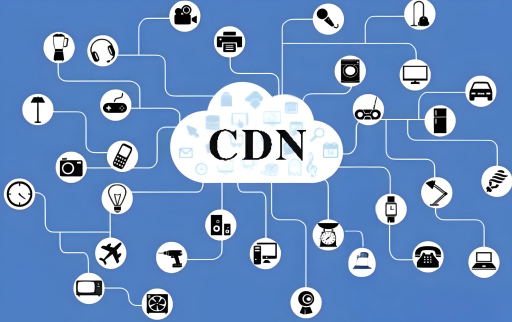
As businesses expand globally, delivering consistent and synchronized content to users across different regions becomes a critical challenge. Variations in network quality, geographic distances, and data privacy regulations can impact performance and user experience. Content Delivery Networks (CDNs) have become the cornerstone of global content delivery, ensuring that content is synchronized and delivered efficiently to users worldwide.
This article delves into how CDNs enable global content synchronization, focusing on the challenges, solutions, and best practices for effective cross-region traffic management.
1. The Need for Global Content Synchronization
1.1 What is Global Content Synchronization?
Global content synchronization ensures that users in different regions access the latest and most accurate content, whether it’s a website, application, or multimedia file.
1.2 Challenges of Global Content Delivery
Latency: Increased distance between users and servers leads to slower load times.
Bandwidth Limitations: High traffic in certain regions can cause congestion and delays.
Regulatory Constraints: Different regions have specific data privacy and storage requirements, complicating global delivery.
Scalability: Managing sudden traffic spikes across multiple regions can overwhelm servers.
2. How CDNs Achieve Global Content Synchronization
2.1 Distributed Edge Servers
CDNs rely on a global network of edge servers to cache and deliver content from locations closer to end users.
Advantage: Reduced latency and faster delivery.
Example: A CDN edge server in Singapore caches content for users in Southeast Asia, reducing the need to fetch data from a server in the US.
2.2 Real-Time Data Replication
CDNs use real-time data replication to synchronize content updates across all edge servers.
How it Works: Changes made to the origin server are propagated to edge servers worldwide.
Use Case: An e-commerce platform ensures updated product inventory is synchronized globally to prevent overselling.
2.3 Intelligent Traffic Routing
CDNs use AI-driven algorithms to route traffic based on factors like server availability, network conditions, and user proximity.
Benefit: Optimized content delivery with minimal delays.
Example: During a global live event, traffic is distributed to the least congested paths to prevent buffering.
2.4 Dynamic Content Delivery
While static content is easily cached, dynamic content requires real-time synchronization. CDNs address this by using:
Edge computing: Processing user-specific requests closer to the user.
API caching: Reducing the need for repeated origin requests.
2.5 Compliance with Regional Regulations
CDNs ensure that content delivery adheres to local data regulations through:
Geo-fencing: Restricting content access to specific regions.
Regional Data Centers: Hosting sensitive data within compliant territories.
3. Best Practices for Cross-Region Traffic Management
3.1 Optimize Cache Policies
Set appropriate TTL (Time-to-Live) values for different content types.
Use versioning for assets to ensure updates are synchronized without disrupting cached data.
3.2 Implement Multi-CDN Strategies
Leverage multiple CDN providers to improve redundancy and performance in specific regions.
Example: Combining providers like AWS CloudFront for North America and Akamai for Asia ensures optimal regional coverage.
3.3 Monitor Traffic Patterns
Regularly analyze traffic patterns to identify bottlenecks or underserved regions.
Tools: Use CDN analytics dashboards to monitor latency, cache hit ratios, and error rates.
3.4 Prioritize Security
Enable SSL/TLS encryption for secure content delivery.
Use Web Application Firewalls (WAFs) to protect against malicious traffic.
Implement Access Controls to prevent unauthorized access.
3.5 Prepare for Traffic Surges
Deploy auto-scaling mechanisms to handle unexpected traffic spikes during events like product launches or live streams.
4. Case Studies: CDN in Action
4.1 Global E-Commerce Platform
Challenge: Ensuring consistent product information across regions during a flash sale.
Solution: Real-time replication of inventory data using CDN edge servers.
Result: Faster load times and synchronized inventory updates reduced cart abandonment rates by 25%.
4.2 International Streaming Service
Challenge: Delivering high-quality video to millions of users worldwide.
Solution: Intelligent traffic routing and adaptive bitrate streaming through CDN.
Result: Buffering rates dropped by 40%, increasing user satisfaction.
5. Emerging Trends in CDN Traffic Management
5.1 AI-Driven Optimizations
AI-powered CDNs predict traffic patterns and adjust resources dynamically, improving efficiency.
5.2 Edge Computing Expansion
Edge servers will increasingly handle complex processing tasks, further reducing latency.
5.3 Sustainability Initiatives
CDNs are adopting energy-efficient technologies to reduce their environmental footprint.
Conclusion
CDNs have revolutionized global content synchronization, making it possible to deliver consistent, high-quality experiences to users around the world. By leveraging intelligent traffic routing, real-time data replication, and compliance mechanisms, CDNs overcome the complexities of cross-region traffic management.
For businesses operating on a global scale, adopting best practices like cache optimization, multi-CDN strategies, and real-time monitoring ensures efficient, secure, and scalable content delivery.

